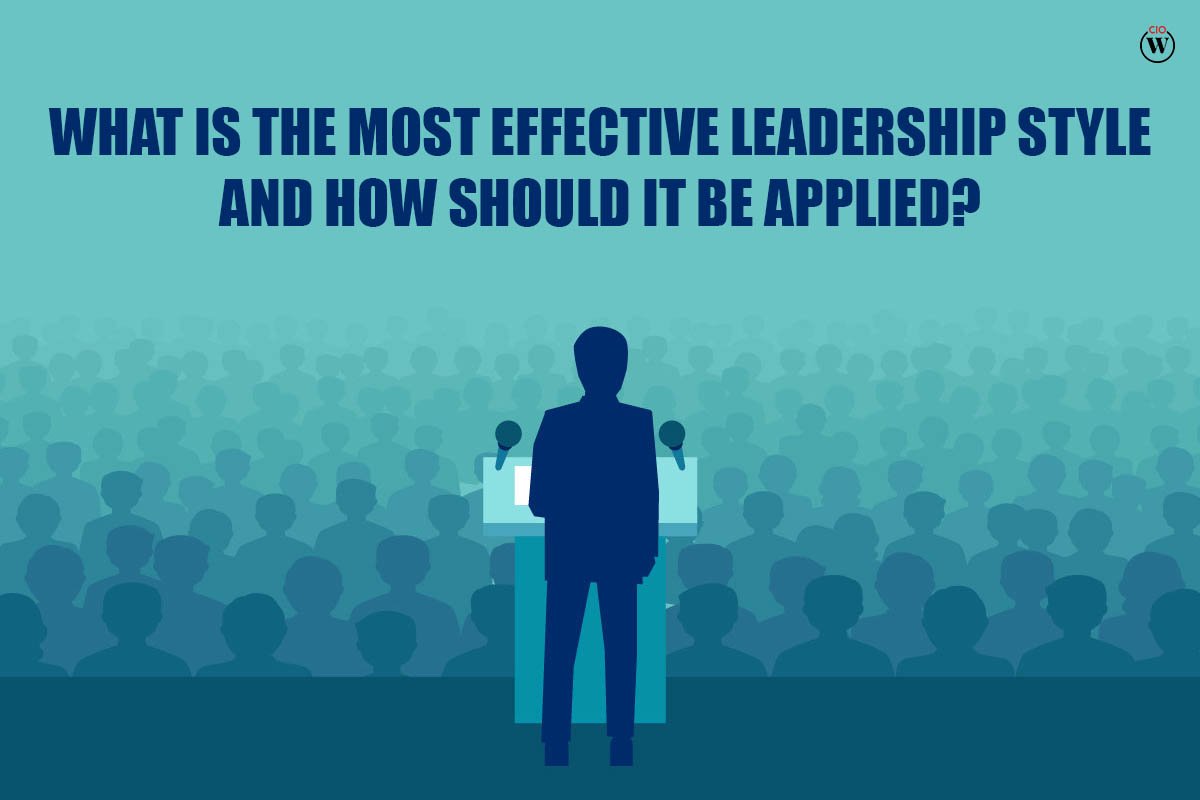What exactly is an Effective Leadership Style?
A competent leader has a clear vision of the company’s objectives and purpose. A leader provides a feeling of purpose to one’s actions that go beyond revenues or stats at the end of the year. What is the goal of expansion? What is your contribution to the company’s success?
Effective Leadership Style are the methods through which a leader takes a team through various phases. These styles govern how a leader executes plans, gives direction, and oversees work. There are several styles based on distinct personalities and methodologies.
You’ll be all too aware of the Effective Leadership Style you don’t want to be known for if you’ve ever been led by a Mushroom (everyone is in the dark), a Seagull (swoops in, squawks, and dumps), or a Kipper (two-faced and gutless).
Happily, the fact that you are reading this post immediately puts you in an exclusive minority of people who are considering what you want your leadership style to be renowned for. The great majority just go to work and get on with it, in whatever manner comes naturally to them.
Although this isn’t always a negative thing (there will always be some qualities to your default style), neglecting to actively develop your leadership style will limit your complete range and maximum effectiveness. And that implies that some circumstances will be far more difficult to manage.
Substance and Style
In today’s market, the content of what you do—the outcome you deliver—is critical. Working on how you do it, on the other hand, is what will catapult you into a whole new level of success—even if you already consider yourself to be very successful.
The Effective Leadership Style you choose to utilize (and yes, to a significant degree, it is an active decision you can make) has a direct influence on the outcome you produce. That is what makes you memorable to others while also making you happy inside yourself.
Here is how an Effective Leadership Style should be used;
1. Be Bold
Leading higher requires boldness. To get your boss’s attention, you must swallow a bold pill and boldly express your argument with as little padding as possible.
Few people would regard businessman Richard Branson, the creator of Virgin Records and Virgin Atlantic Airlines, as a remarkable communicator. Nevertheless, a tremendous visionary—absolutely. His audacity may be amazing. And most of it derives from his not caring what people think of him.
“Have some personality,” suggests Karen Bosher, Head of Shops for Mothercare Group’s Southern UK division. “Courage powered by ethics and a dash of sound judgment should give you the courage to stand out.”
“I’ve discovered that shifting my thinking truly frees me up to confront, take chances, and dare to make errors,” she says.
Examine where you’ve been holding back as a leader. Then then, who doesn’t? Where could you be more daring?
Make a note of 3 to 5 items that worked well in your Effective Leadership Style for one week, at the conclusion of each day. Use them more actively next week.
2. Know your own strengths.
a slew of new developments in the field of technology (visionary, affiliative, coaching, democratic, directive, and pace-setting).
Learn your distinctive leadership style from the inside out. Increase your knowledge of your inherent abilities and intentionally play to them as much as possible.

Ask five coworkers to identify the strengths of your Effective Leadership Style.
Get a copy of Tom Rath and Barry Conchie’s Strengths Based Leadership and take the online StrengthsFinder test to determine your trademark leadership themes.
3. Extend Your Leadership Style
Together with playing to your strengths, deliberately attempt to expand into the leadership style(s) that you find more difficult.
In a nutshell, Goleman’s EQ study results are as follows: the most effective leaders can deliberately draw from and smoothly integrate all Effective Leadership Styles, depending on the occasion. One size does not, without a doubt, fit everyone.
Male work conditions tend to breed a more directive and pace-setting personality. If this is not your natural style but is essential for your work.
Dr. Samantha Collins, CEO and Founder of Aspire, recently trained to be a member of the Save The Children emergency relief team and discovered that her natural coaching/affiliative approach was insufficient in times of crisis.
“I needed to be really authoritative and punchy—even pushy,” she says. “But, what worked best for me was to offer clear orders in as personal and amusing a manner as possible, so that the task was done more successfully but I didn’t feel like I was selling out on myself.”
Use your team’s leadership talents to your advantage. “The greatest leaders are not well-rounded…[but] the best teams are,” argues Gallup’s Tom Rath, who has polled over 3 million individuals on leadership style and skills.
Find methods to truly mix your Effective Leadership Style stretch areas with your natural style.
Evaluate the balance of strengths in your team or company. Who in your team has qualities that complement your own leadership style, and how might you leverage them more effectively?
4. have a direction
Call it being visionary, establishing direction, or having a compelling point—creating optimism for the future and assisting others in seeing the path ahead is one of the top four fundamental requirements of followers, according to Gallup’s most recent study.
According to recent Hay Group research, in order to be a great leader, you must be able to articulate a vision of where you and others need to go. This will not only instill confidence in your staff, but it will also boost your effect with your supervisors.

Create an external network and read extensively. To establish a bigger-picture vision, you must have a thorough understanding of what is going on outside your business or department.
Create a draft and convey it. It does not have to be flawless from the start. You will not be regarded as a visionary until you spread the message.
5. Be Follower-Focused
The most effective leaders are compassionate and socially concerned. Acknowledging others’ contributions and allowing the team to create are the finest ways to lead toward a more resilient future.
Examine the question, “Why should I lead my team?” Take note of what you currently provide them and what they need more of from you in order to perform at their best.
“What can I provide my team today?” asks yourself.
6. Maintain a Healthy Balance
Aim for long-term thinking and behavior. The “do it and be damned with the consequences” mentality may still be going on around you, but strong leaders recognize that it won’t wash out long term.
“What may the unforeseen consequences of my/our activity be?”

Maintain your equilibrium. Prioritize the activities outside of work that keep you sane by blocking out “golden time” on your schedule to adopt an Effective Leadership Style.
7. Be Honest with Yourself
Google returns 8.5 million online sites, all claiming to have “the finest” chocolate cake recipe. Each must be someone’s favorite! There is no such thing as “the finest” leadership style in isolation, just as there is no such thing as “the best” chocolate cake. What exists is the optimal Effective Leadership Style for you in a particular scenario. So stop striving to be someone that you are not.
People will see right through you if you are not honest. Real pride and enthusiasm accelerate the development of connection and trust. Building outstanding internal and external connections requires integrity, sincerity, and living your speech.








